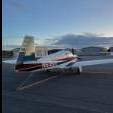CHT temps too cold?
-
Members Online
- alextstone
- CCAS
- Peter T
- Skyland
- M20F
- eman1200
- Robert C.
- aviatoreb
- 0TreeLemur
- Aaviationist
- dkkim73
- hammdo
- GeeBee
- jamiesj
- TreyAyers
- katzhome
- Jim Peace
- David Cabot
- Echo
- TCC
- Yetti
- Axel2828
- redbaron1982
- spaceman39a
- atpdave
- Jay Bird
- Barzook
- McMooney
- Hoeschen
- Jimmyred
- 1980Mooney
- KSMooniac
- bluehighwayflyer
- Sabremech
- SkyBound
- Charles K
- 201er


Recommended Posts
Join the conversation
You can post now and register later. If you have an account, sign in now to post with your account.